I played with the card game 'San Juan 2' that seeks wealth and fame while playing roles such as merchants and gold miners.

Architects and mastering the five types of occupation, such as merchant, or building a facility with a variety of effects, price is a card game that aims to be more than anyone else while and sell products that change obtain a large wealth and fame 'Sun Fan 2 '. It is said that a new card has been added to '
San Juan 2-Mobius Games Online Shop
https://mobiusgames.shop-pro.jp/?pid=155789143
The San Juan 2 package looks like this.
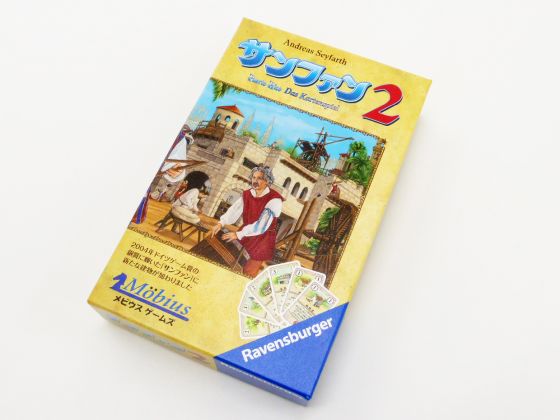
The number of players is 2 to 4, the target age is 10 years old and over, and the time required for one game is assumed to be 30 to 60 minutes.
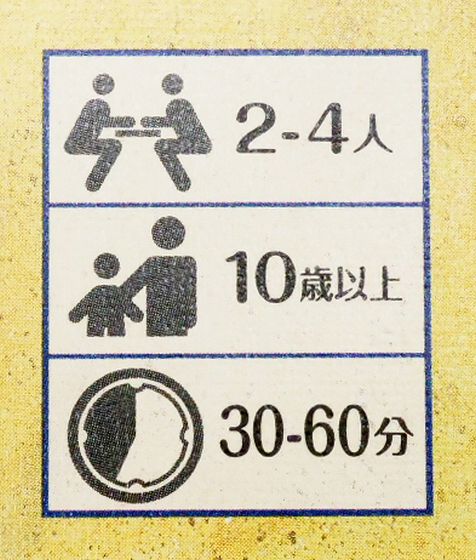
The package contains 'Production Facility Cards' such as 'Indigo Dye Factory,' 'Sato Refinery,' and 'Tobacco Storage.' The number on the top of the card indicates the 'cost' for using the card, and the number on the bottom indicates the 'victory points'.

Various types of 'Urban Facility Cards' such as 'Museum', 'Poorhouse', and 'Oratory' are also included, and the cost and victory points are recorded in the same way as the 'Production Facility Card'.

In addition, there are 5 types of role cards such as 'merchant', 'council member', 'gold digger', 'architect', and 'director', and 'governor card' indicating the start player. Different actions are assigned to each role, such as 'merchant' 'sells goods' and 'councilor' 'draws a card from the deck'.
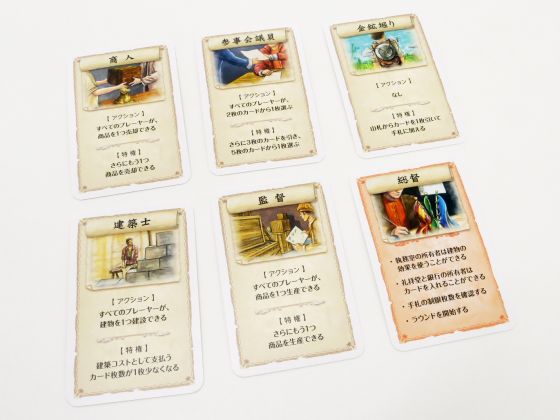
In addition, there was also a 'factory card' that determines the selling price of the product.
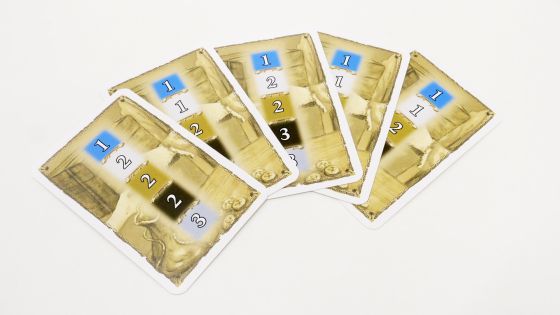
To start the game, mix the 'Production Facility Card' and 'Urban Facility Card' well to make a deck, and arrange 5 'Role Cards' next to the deck. In addition, place the 'Factory Card' above the 'Role Card' and give the 'Governor Card' to the start player.
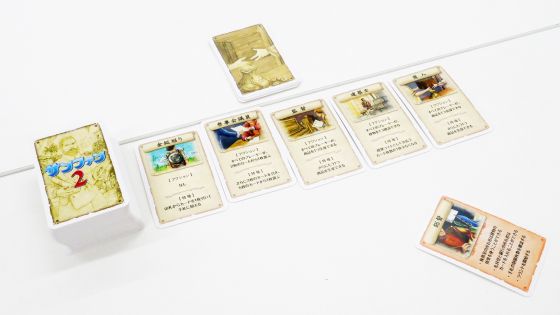
Next, each player draws four cards from the deck into his hand.
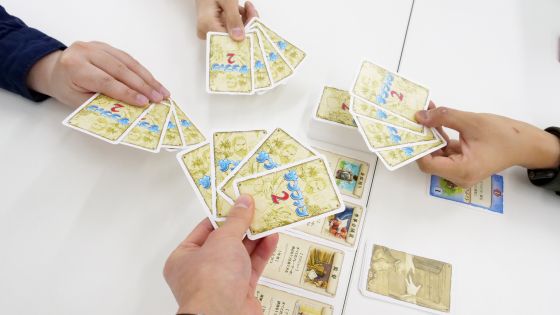
Finally, each player receives one 'Indigo Dye Factory' and places it in the field, and the game is ready.
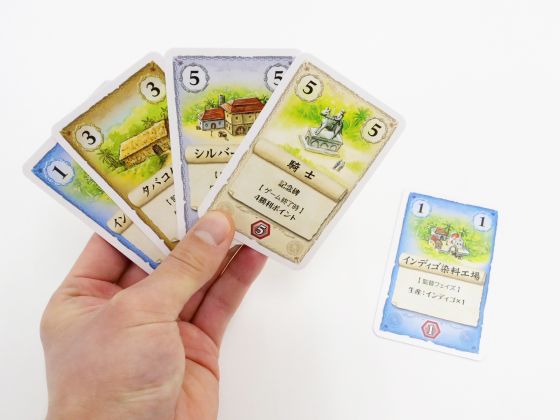
When the game starts, the player who has the 'Governor Card' chooses one role card. This time, we selected 'Director' who can produce products from 'Production Facility Card'.

In the phase where the 'Director' card is selected, everyone in the field can produce goods at the production facility. Products are produced by placing the cards drawn from the deck face down on the production facility. At the beginning of the game, there was only one production facility at hand, the 'Indigo Dye Factory', so everyone placed one card from the deck at the 'Indigo Dye Factory' at hand.
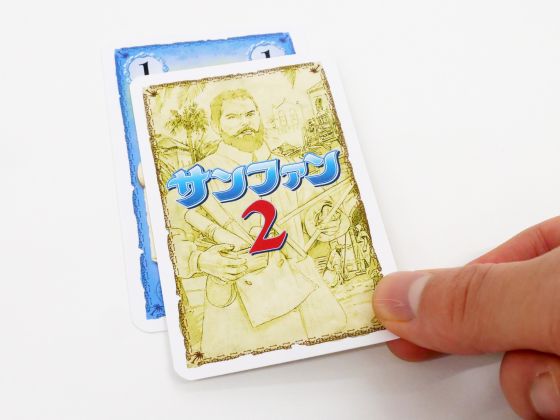
In San Juan 2, once the governor draws a 'role card', everyone can take that action. When everyone's actions are complete, the player to the left of the governor chooses one of the remaining roles in play, and everyone plays the action for that role again.
The next player has selected 'Merchant'. The action of the 'merchant' is 'you can sell one item', and each player can add a card from the deck to the hand by selling the produced item.
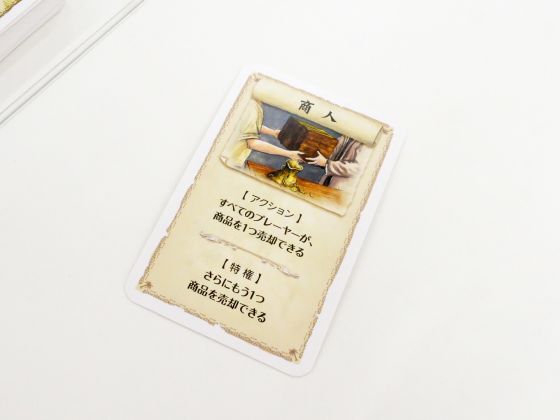
Before selling a product, first turn the top card of the 'Factory Card' pile face up to determine the product rate. On the factory card, the number of cards that can be obtained when selling the product is written along with the color corresponding to each production facility card, such as blue for 'Indigo Dye Factory' and white for 'Sato Refinery'. .. For example, in the case of an indigo dye factory, if you sell one item, you can get one card from the deck.

Each player then selects the item to sell. This time, I decided to sell the product of the 'Indigo Dye Factory' that I produced earlier and draw a card from the deck.
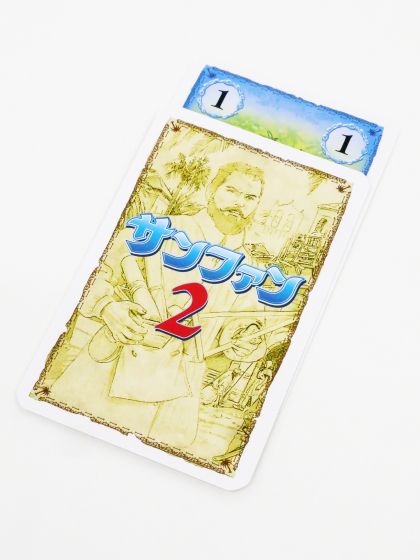
Discard the item you want to sell ...
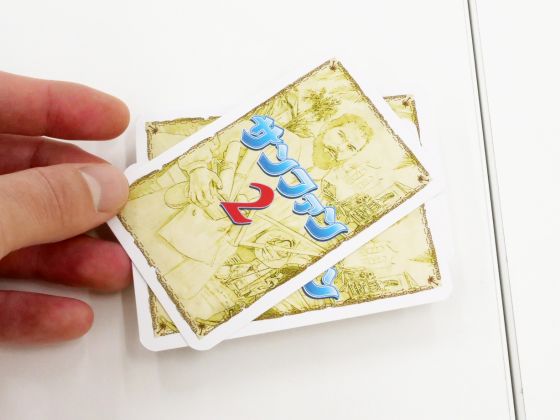
Draw a card from the deck. You need cards to collect victory points, but you can increase the number of cards in your hand by 'selling' the products that you 'produced' at the production facility.
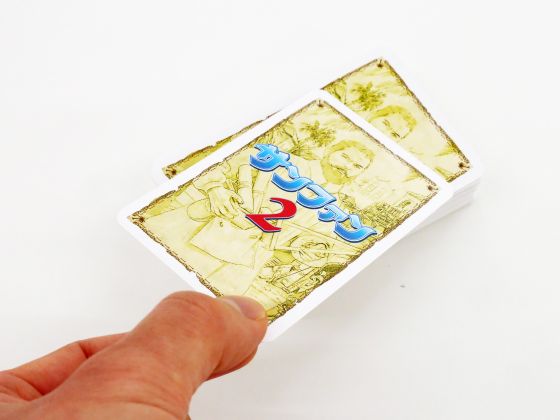
When everyone has sold the item, return the 'Factory Card' to the bottom of the mountain and the 'Merchant' play is complete.
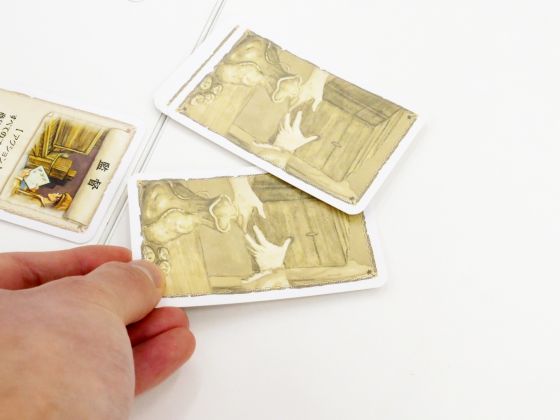
Selling goods is not the only way to win a card. In the 'Councilor' of the 'Role Card', each player can perform the action of 'drawing two cards from the deck, selecting one and adding it to the hand'.
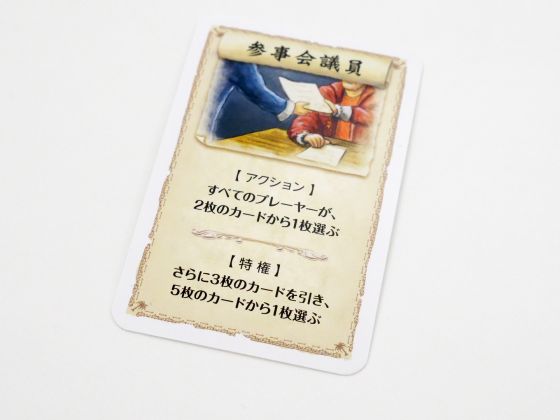
Players who select 'Role Card' can use 'Privilege' in addition to normal actions. For example, a player who selects 'Councilor' is a privilege effect, and '1 out of 5 cards' You can select 'sheets'.
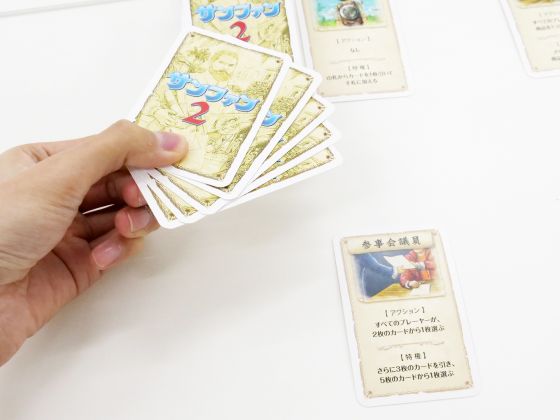
In addition, there is also the role of 'gold digging' where only privileged players can draw cards from the deck. However, this card can only be obtained by the player who selected the gold mining card.
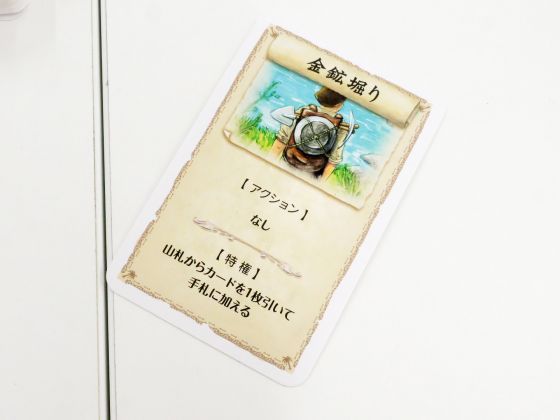
After collecting cards in your hand using various methods, you can use the action of 'Architect' to build the building marked on the 'Production Facility Card' or 'Urban Facility Card' in your hand.

When building a building, you need to discard as many cards as the cost indicated on the card. This time, I discarded one card and built another 'Indigo Dye Factory' with a cost of 1.
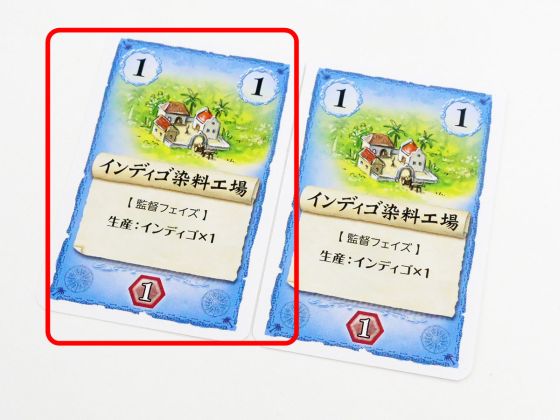
Players who select 'Architect' can use the privilege of 'building cost is reduced by 1'. Thanks to the privilege, this player was able to build a 'blacksmith' with the effect of 'reducing the cost of building a production facility by 1' at zero cost.
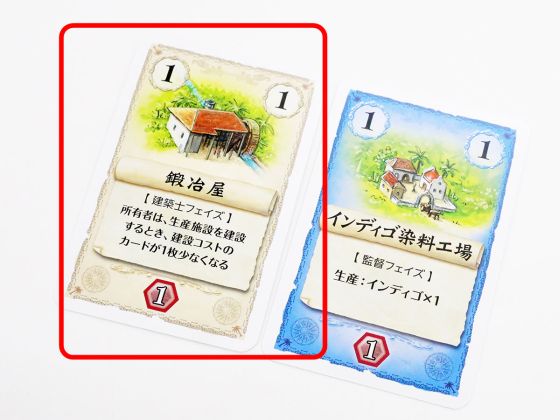
Once all players have selected a role, the 'round' is over. At the end of the round, the governor hands the 'governor card' to the player to the left, and after everyone returns the 'role card' to play, the next round begins. In San Juan 2, this cycle continues until one player builds 12 buildings.
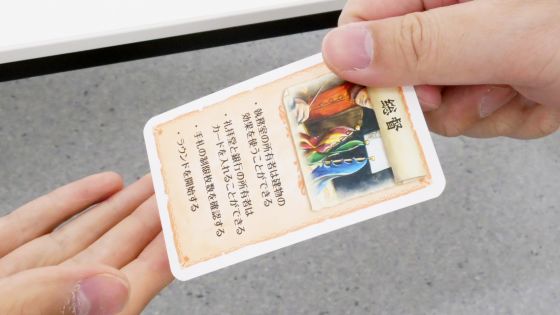
Some 'Urban Facility Cards' have the effect of increasing the number of ways to obtain cards. For example, the following 'gold mine' means that when the role of 'gold mine digging' is selected, you can get a chance to draw a card even if you do not have privileges.
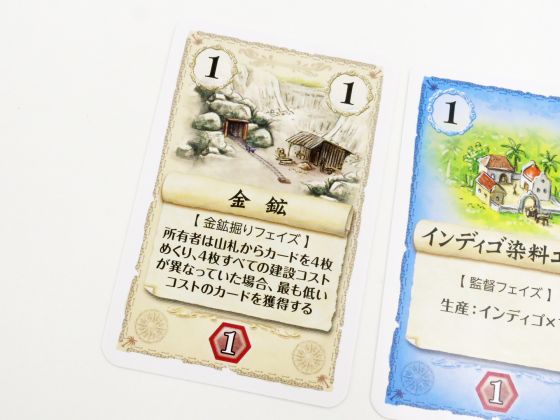
However, you can only get cards in 'Gold Mine' if you draw 4 cards from the deck and all 4 cards have different costs, and you can get the lowest cost card. The four cards I drew this time had the same cost as 3, 3, 2, and 3, so I couldn't get the card.
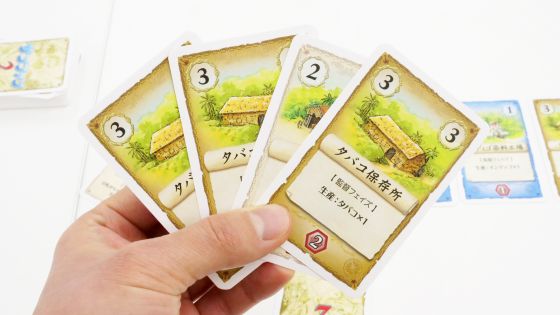
The 'Urban Facility Card' has other facilities with various effects. For example, a 'library' can enhance the privileged effects of all roles. This time, we were able to strengthen the privilege of 'choose one out of five cards' of the 'Councilor' and 'choose one card out of eight cards'.
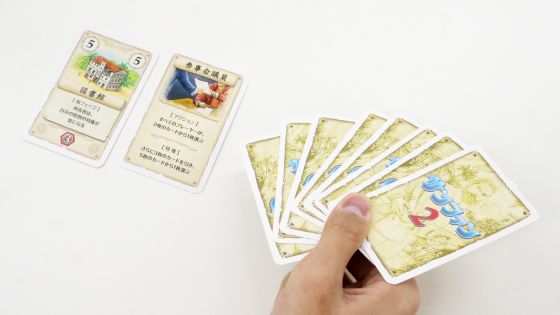
In addition, the following 'Oratory' can put one card down at the beginning of the round. You can add 1 victory point for each hand placed under the chapel, so if you take it out early and put in one hand each time, you can add a lot of victory points. The heart of this game is not just to put out cards one after another, but to think about various strategies according to the effect of city construction cards.
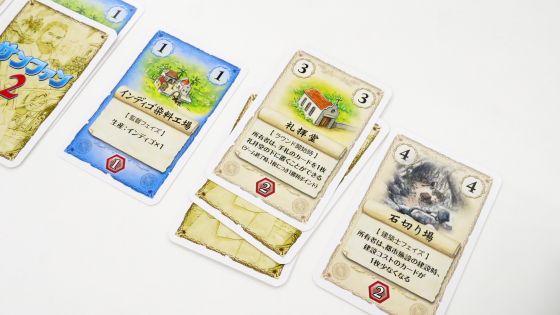
The game is over as the game progresses and one player builds 12 facilities. When the game is over, calculate the victory points and decide the winner. To calculate victory points, first add up the numbers at the bottom of each card.

In addition, you can also earn victory points by the effect of the 'Urban Facility Card'. For example, this player earned a total of 8 points for the 'Victory Column' and 'Knight' effects, and 7 points for the 'Palace' effect, for a total of 37 points.
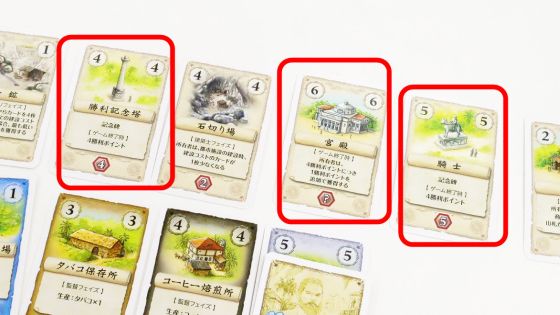
The facility built by the winning player looks like this. The 'Production Facility Card' is only the 'Indigo Dye Factory' that has been built since the beginning of the game, and the remaining 7 cards are all 'Urban Facility Cards'. Only 8 facilities have been built in total, and the total victory points for each is only 19 points ...
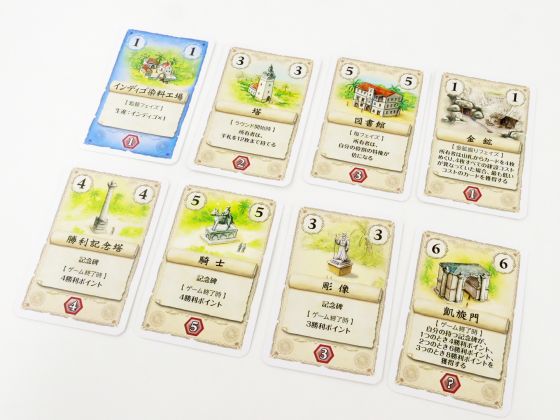
11 points for the effect of the building that can get additional victory points such as 'Victory Memorial Tower', 'Knight', and 'Statue', and 8 for the effect of 'You can get points according to the number of monuments built' of 'Triumphal Arch'. I have earned points, and I have won a total of 38 points.
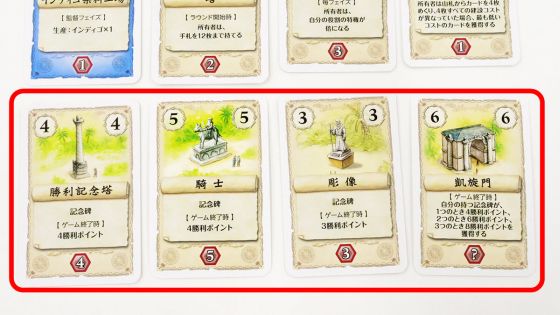
In this way, in San Juan 2, you can win even with a small number of facilities by selecting the 'Urban Facility Card' to be built according to your strategy. Also, because the action of the 'Councilor' allows you to draw the cards you want in your hand, I felt that it was easier to proceed with the game according to your own strategy compared to general card games.
In the next game, I'll add 30 expansion cards and play.
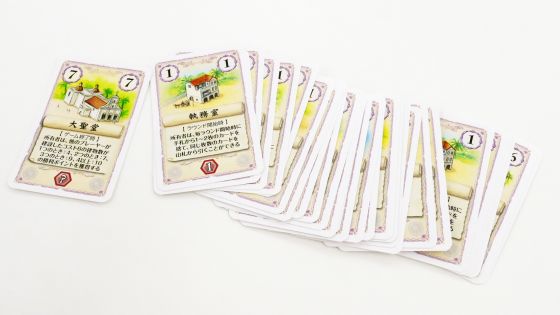
All 30 expansion cards are 'Urban Facility Cards', and the 'Office' effect that 'you can exchange cards in your hand and deck at the beginning of each round' and '1 victory point each time you sell a product' Includes cards with effects that expand the strategy of the game, such as the 'port' effect of 'acquire'.
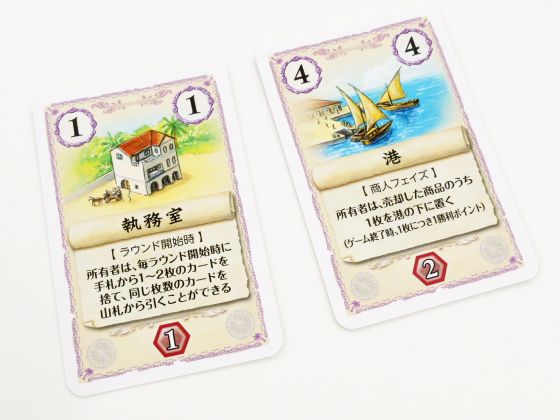
Even if you use an expansion card, the basic rules do not change, but you need to place a 'cathedral' next to the 'factory card' at the beginning of the game. 'Cathedral' is a 'Urban Facility Card' that anyone can get by paying 7 costs, and has a powerful effect of 'getting victory points according to the cost of cards constructed by other players'.
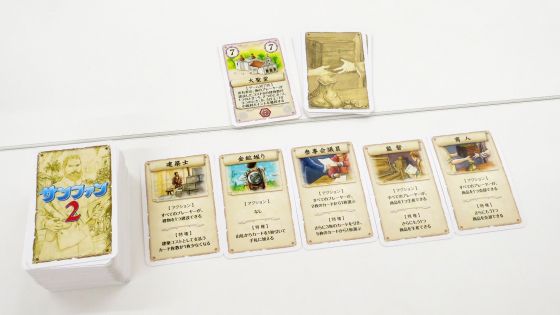
The first hand this time is like this. Since I was able to draw 'Port' in my hand, I decided to play with the strategy of selling more and more products and earning victory points.
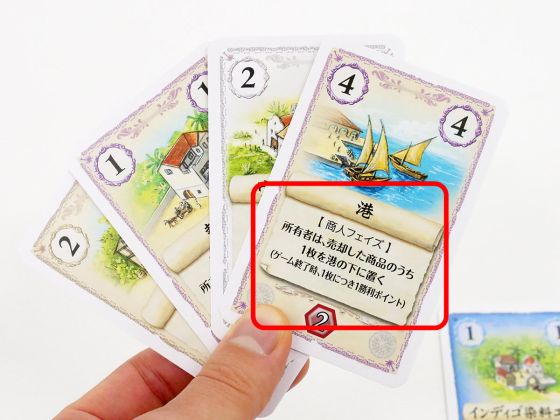
However, the player who did not build any production facilities in the previous play won the championship, so in this game most players will play with the strategy of building many urban facilities. Therefore, there are few chances that the 'role card' of the 'merchant' is selected, and it is difficult to sell the product.
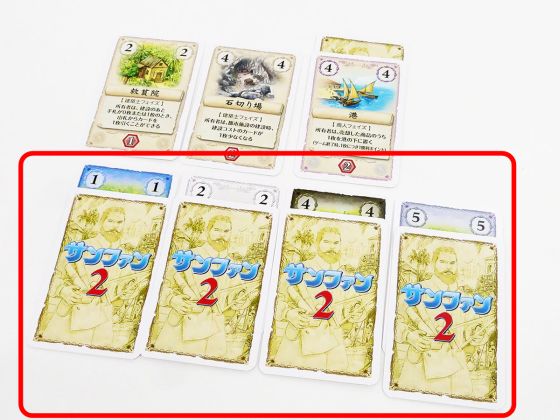
Expansion cards include 'Urban Facility Cards' with various effects, in addition to 'Urban Facility Cards' related to earning victory points such as 'Port'. For example, a 'park' has the powerful effect of reducing the cost of building a building by 6 when combined with a 'crane'.
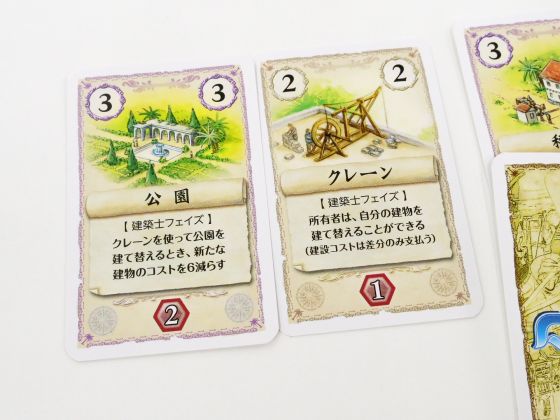
This player succeeded in building a 'castle' with a cost of 6 at a cost of 0 by combining a 'park' and a 'crane'.
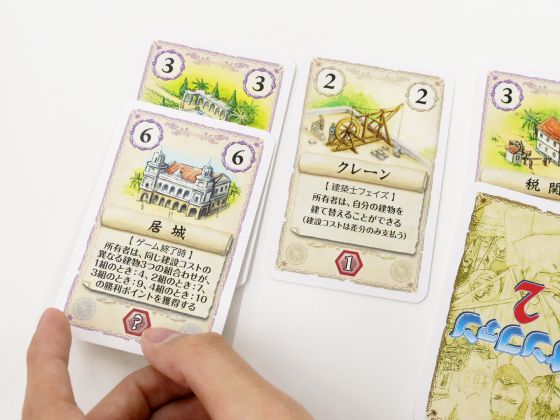
And as the game progresses, the player who collects 6 cards in his hand ...
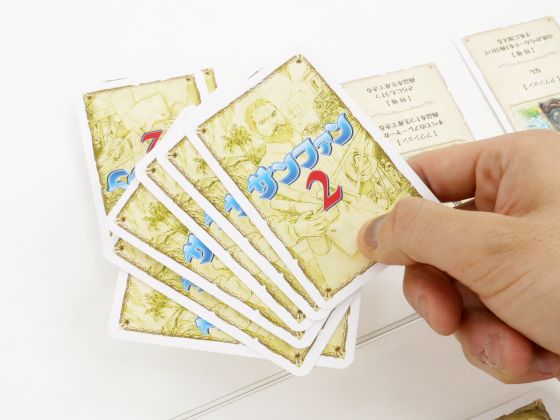
Using the privilege of an 'architect' to reduce the construction cost by 1, we succeeded in building a 'cathedral' at a cost of 6.
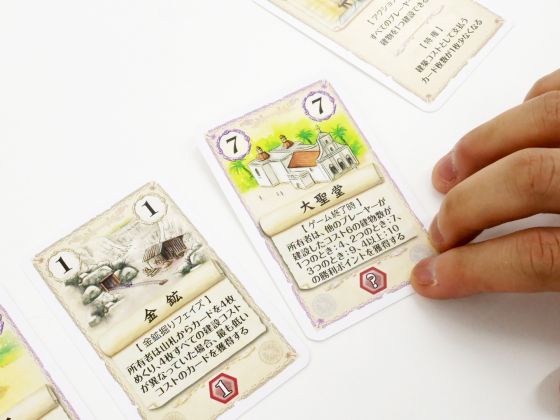
After that, the game ended because the player who built 12 buildings appeared. In this game, we couldn't sell the products we produced so much, so we got only 4 victory points from the effect of 'Port'. In total, I got 37 points, which is lower than the previous game.
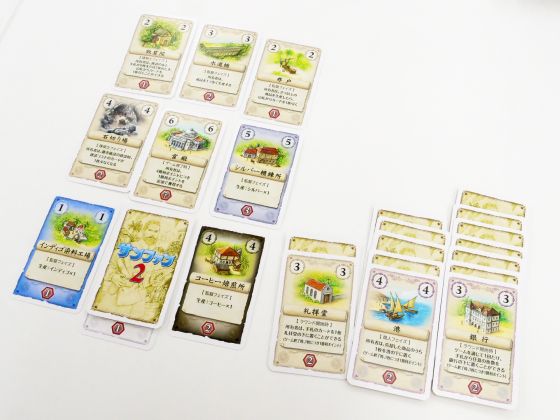
Players who build a 'cathedral' with the privileges of an 'architect' will get 10 points for the 'cathedral' effect, 11 points for the 'chapel' effect, 10 points for the 'city hall' effect, and so on. By making good use of the effect of the 'Urban Facility Card', he earned a large amount of victory points and won a total of 58 points.

When I actually played San Juan 2, I was able to start the game immediately because it was a simple rule that I could understand immediately and I didn't need any dice or pieces other than cards. In addition, there are many ways to adjust your hand, such as selecting a card from the deck and drawing it, or exchanging cards in your hand for the deck, so you can play according to your strategy. I will. However, depending on the strategy of other players, your strategy may not be effective, so you need to flexibly change the strategy while reading the strategies of other players. San Juan 2 was a well-balanced card game that was easy for beginners to play and enjoyed by advanced card game players who like to formulate strategies.
At the time of writing the article, San Juan 2 is available on Amazon.co.jp for 2400 yen.
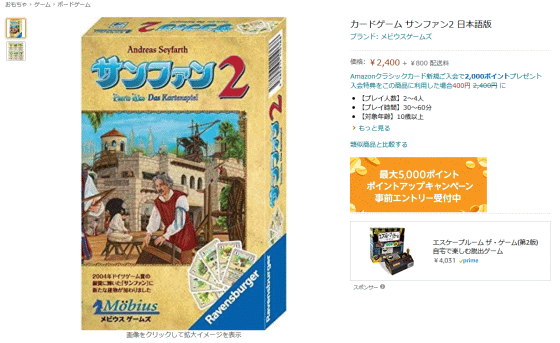
Related Posts:







